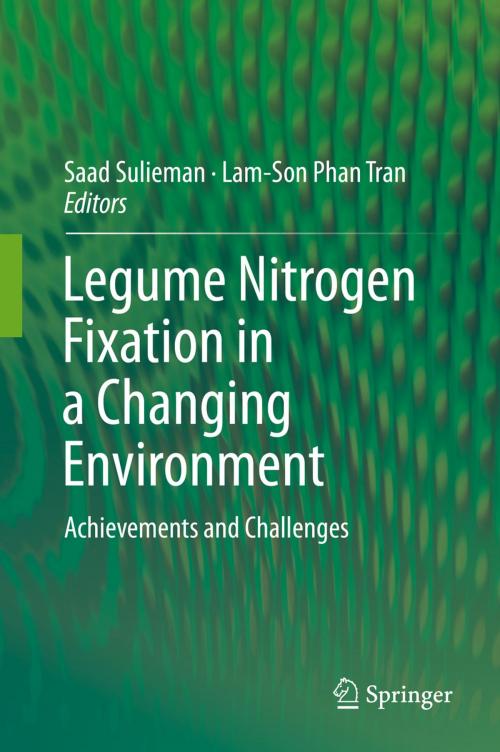Legume Nitrogen Fixation in a Changing Environment
Achievements and Challenges
Nonfiction, Science & Nature, Technology, Agriculture & Animal Husbandry, Science, Biological Sciences| Author: | ISBN: | 9783319062129 | |
| Publisher: | Springer International Publishing | Publication: | April 24, 2015 |
| Imprint: | Springer | Language: | English |
| Author: | |
| ISBN: | 9783319062129 |
| Publisher: | Springer International Publishing |
| Publication: | April 24, 2015 |
| Imprint: | Springer |
| Language: | English |
The world population will grow more rapidly during the few coming years. This must be accompanied by a parallel increase in the agricultural production to secure adequate food. Sustainability considerations mandate that alternatives to chemical nitrogen fertilizers must be urgently sought. Biological nitrogen (N2) fixation, a microbiological process which converts atmospheric N2 into a plant-usable form, offers this alternative. Among these renewable sources, N2-fixing legumes offer an economically attractive and ecologically sound means of reducing external inputs and improving internal resources. Environmental factors such as drought, elevated temperature, salinity, soil acidity and rising CO2 are known to dramatically affect the symbiotic process and thus play a part in determining the actual amount of nitrogen fixed by a given legume in the field. Understanding how nodule N2 fixation responds to the environment is crucial for improving legume production and maintaining sustainability in the context of global change. In this thoughtful and provocative new Brief, we provide critical information on how current and projected future changes in the environment will affect legume growth and their symbiotic N2 fixing capabilities. Each section reviews the main drivers of environmental change on the legume performance that include drought, elevated temperature, salinity and rising CO2, and soil acidity. Importantly we discuss the molecular approaches to the analysis of the stress response in legumes and the possible biotechnological strategies to overcome their detrimental effects.
The world population will grow more rapidly during the few coming years. This must be accompanied by a parallel increase in the agricultural production to secure adequate food. Sustainability considerations mandate that alternatives to chemical nitrogen fertilizers must be urgently sought. Biological nitrogen (N2) fixation, a microbiological process which converts atmospheric N2 into a plant-usable form, offers this alternative. Among these renewable sources, N2-fixing legumes offer an economically attractive and ecologically sound means of reducing external inputs and improving internal resources. Environmental factors such as drought, elevated temperature, salinity, soil acidity and rising CO2 are known to dramatically affect the symbiotic process and thus play a part in determining the actual amount of nitrogen fixed by a given legume in the field. Understanding how nodule N2 fixation responds to the environment is crucial for improving legume production and maintaining sustainability in the context of global change. In this thoughtful and provocative new Brief, we provide critical information on how current and projected future changes in the environment will affect legume growth and their symbiotic N2 fixing capabilities. Each section reviews the main drivers of environmental change on the legume performance that include drought, elevated temperature, salinity and rising CO2, and soil acidity. Importantly we discuss the molecular approaches to the analysis of the stress response in legumes and the possible biotechnological strategies to overcome their detrimental effects.















